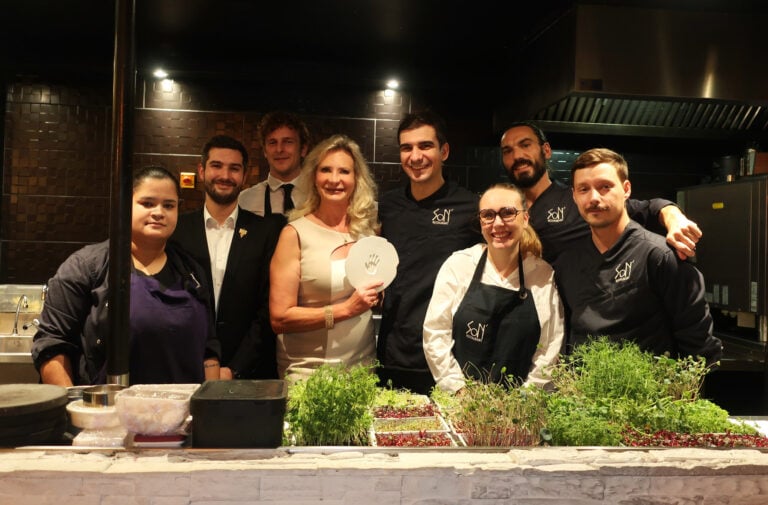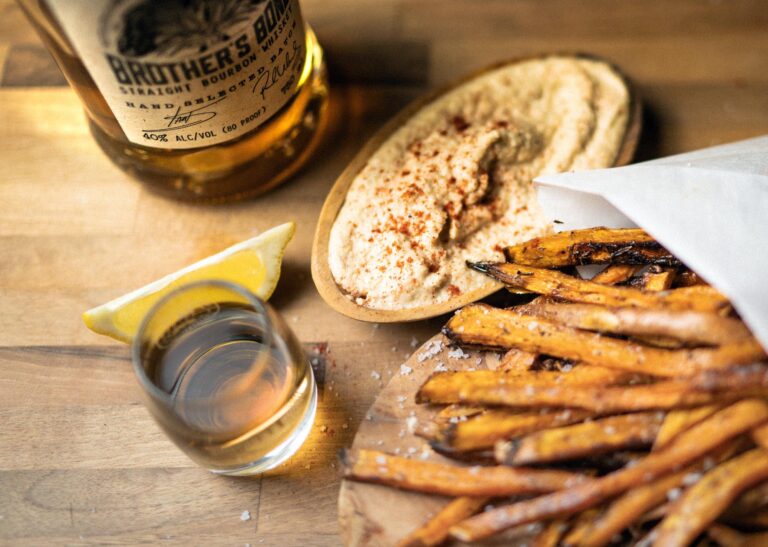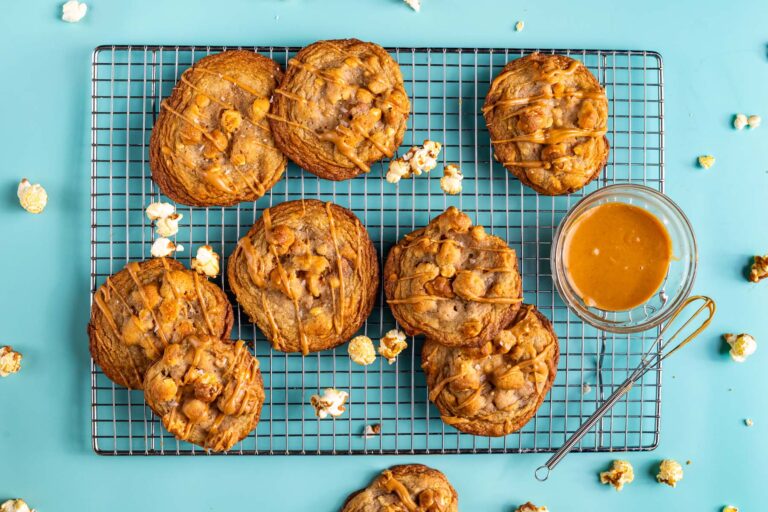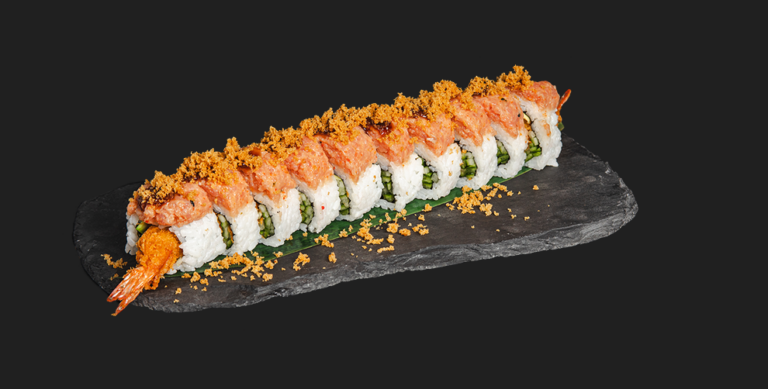The 13 Best Sauvignon Blanc Wines in 2024
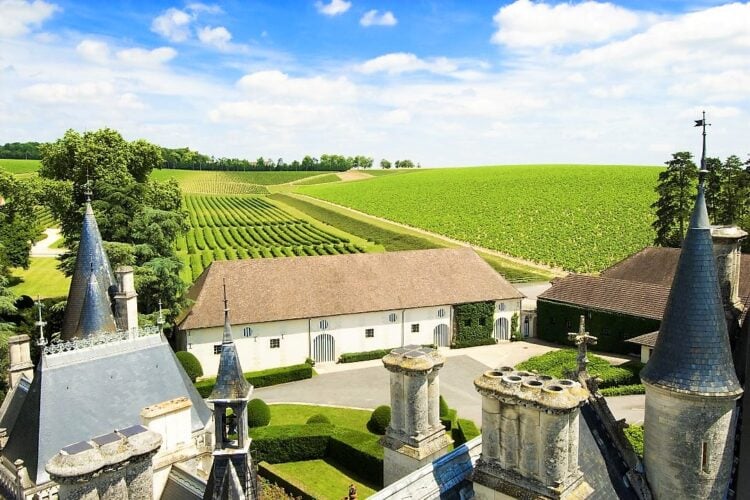
Does Sauvignon Blanc Age Well?
> ABOUT SAUVIGNON BLANC GRAPE VARIETAL
Sauvignon Blanc is a yellow, slightly green-skinned grape varietal that originates from the Bordeaux region of France and can be traced back to the 18th century. The grape most likely gets its name from the French word “sauvage” (wild) and “blanc” (white). It is possibly a descendant from the grape Savagnin, which is still grown in the Jura region in France. Interestingly, while Sauvignon Blanc is a white wine, the crossing with Cabernet Franc created the noble grape Cabernet Sauvignon.
The grape develops best in temperate climates found in numerous wine regions in France (Loire and Bordeaux), Italy (Friuli and Alto Adige), Austria (Styria), Spain (Rueda), Romania, Bulgaria, United States (California and Washington), Canada, New Zealand, Australia, South Africa and Chile.
Sauvignon Blanc produces wines that are very forward, crisp, dry, aromatic and extremely distinctive. Classic Sauvignon Blanc aromas range from grass, green bell peppers, nettles, blackcurrant leaf and asparagus to green apples, gooseberries, passion fruit, grapefruit, peach, elderflower and to more esoteric notes such as cat’s pee and flint. The latter is a sign of a wine from Pouilly-Fumé in the Loire Valley where the struck flint smell derives from the presence of high levels of chert in the local limestone soils. This effect is so pronounced and consistent that Sauvignon Blanc was once widely known as Blanc Fumé in this part of the Loire. Robert Mondavi fell in love with Pouilly-Fumé produced by his friend, the Baron de Ladoucette, and when he first made a Sauvignon Blanc at his winery in Napa, he called it Fumé Blanc.
The wine is usually consumed young as it does not particularly benefit from aging due to the development of vegetal aromas such as canned asparagus and peas. Exceptions do exist, though.
Synonyms include: Sauvignon Bianco, Muskat-Silvaner, Muskat-Sylvaner, Fumé Blanc.
> Check out GAYOT’s Sauvignon Blanc Food Pairing Suggestions.
1. Alma de Cattleya, 2020 Sauvignon Blanc | Sonoma County, California, USA
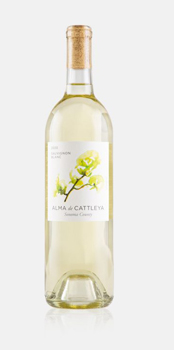
Origin: Sonoma County, California
Varietal: 100% Sauvignon Blanc
Price: $20.00
ABV: 14.1%
Bibiana Gonzalez Rave grew up in Columbia, a country where vineyards are virtually nonexistent. Her exposure to wine was limited only to rare occasions at the dinner table. A few sips occasionally stolen from her father’s wine glass were enough to inspire an all-consuming dream—to become a winemaker. So, she packed her bags and left for France where she studied viticulture and enology. After working at many wineries around the globe, sending her between California, France and South Africa, she decided to call California her home. By the end of 2011, after many harvests perfecting the craft of making wine, she set upon her own adventure—a label known today as Cattleya Wines, named after the Cattleya orchid, the national flower of Columbia.
The wine has a beautiful straw color. The nose bursts with notes of lemon zest, grapefruit, ripe melon and mint. It is medium-bodied delivering flavors of tropical fruit, a touch of minerality and lime peel, very elegant and evolving in a great finish.
> For more information, visit Cattleya Wines official website.
2. Astrolabe, Marlborough 2021 | Marlborough, New Zealand

Origin: Marlborough, New Zealand
Varietal: 100% Sauvignon Blanc
Price: $20.00
ABV: 13%
Sauvignon Blanc is widely considered by the wine drinkers of the world to reach its pinnacle of potential in Marlborough. The Astrolabe Province Marlborough Sauvignon Blanc is made from grapes grown across three Marlborough sub-regions: the Wairau Valley, the Awatere Valley and the Kēkerengū Coast. The blend of sites, soils and aspects within this wine gives it great complexity, reflecting both the capability of the region as a whole and the winemaker Simon Waghorn ’s own palate. He has sought out sites across the whole Marlborough wine region, looking for different soils and climates and carefully managing cropping levels so that he has the best fruit to work from.
The wine shows a pale yellow color. The classic bouquet reveals notes of passionfruit, lemon zest, apple and spice. The palate is medium-bodied with lush flavors of lemongrass, melon and tropical fruit.
> For more information, visit Astrolabe official website.
3. Covenant, Red C, 2021 Sauvignon Blanc | Lake County, California, USA
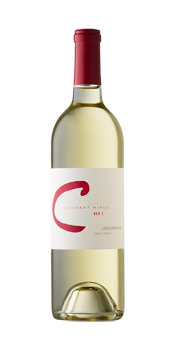
Origin: Lake County, California
Varietal: 100% Sauvignon Blanc
Price: $24.00
ABV: 13.5%
In 2003, Covenant founders Jeff Morgan and Leslie Rudd tasted an Israeli wine that inspired them to bring a new California perspective to a 3,500-year-old winemaking tradition. What started as a 500-case Napa Cabernet project has now grown more than ten-fold. Today, Covenant’s 7,000-square-foot urban winery is situated in Berkeley, California, also home to other urban wineries. Covenant’s sister winery, Covenant Israel, was founded in 2013.
Their latest vintage of Sauvignon Blanc comes from a region in Northern California where Sauvignon Blanc is considered the king of white wines. This single vineyard Sauvignon Blanc comes from a small parcel north of Napa in Lake County.
This kosher wine offers grapefruit, lemon zest and spices with a crisp, clean palate, a hint of minerality, juicy acidity and a medium length finish.
> For more information, visit Covenant Wines official website.
4. Dry Creek Vineyard, Dry Creek Valley 2021 | Sonoma, California, USA

Origin: Sonoma, California
Varietal: 71% Sauvignon Blanc, 22% Sauvignon Musqué, 7% Sauvignon Gris
Price: $20.00
ABV: 13.5%
Established in 1972, Dry Creek Vineyard is Dry Creek Valley’s flagship winery located in the heart of Sonoma County, California. As the region’s first new winery following Prohibition, founder David Stare paved the way for a viticultural rebirth in this vibrant winegrowing appellation. Among other industry benchmarks, Dry Creek Vineyard is recognized as the first winery to plant Sauvignon Blanc in the Dry Creek Valley. Dave Stare first planted the French varietal in the early 70s. His vision was to start a Loire-Valley-inspired winery that would introduce consumers to the wines of northern Sonoma County. Today, the Dry Creek region is dominated by this grape varietal.
This Sauvignon Blanc shows a bright straw color and aromas of tropical fruit, peach, melon and white flowers. On the palate, flavors of grapefruit, spice, passion fruit and lemon zest shine through evolving in a lively finish with well-measured juicy acidity.
> For more information, visit Dry Creek Vineyard official website.
5. Esprit de Saint-Sulpice, 2020 Bordeaux Blanc | Bordeaux, France

The 145-acre Château Saint-Sulpice estate is situated in the eponymous village in northern Entre-Deux-Mers, just south of Saint-Émilion and 14 miles northeast of the city of Bordeaux. There, the soils and climate are almost identical to the neighboring appellations of Saint-Émilion and Pomerol. The property is planted with Merlot, Sauvignon Blanc, Sémillon and is very carefully tended by owner-winemaker Pierre Dubergé and his son Christophe. Their spotless cellar has been recently modernized, including a battery of stainless steel tanks.
This pale straw yellow colored wine is marked by complex aromas and flavors of lime zest, tropical fruit and apple. Well-balanced between the Sauvignon Blanc and Sémillon, the wine is dry, fruity, mineral and long on the finish.
> For more information, visit Château Saint-Sulpice official website.
6. Gamble, 2021 Sauvignon Blanc | Napa Valley, California, USA
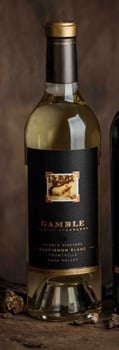
Origin: Napa Valley, California
Varietal: Sauvignon Blanc
Price: $35.00
ABV: 13.4%
Founded in 2005 by third-generation Napa farmer Tom Gamble, Gamble Family Vineyards farms approximately 175 acres of prime estate vineyards from Napa Valley’s most respected AVAs – Oakville, Yountville, Mount Veeder and Rutherford. Set in an isolated nook off of Highway 29 in the heart of Napa Valley’s Oakville District, the winery, open to guests by invitation, has a quiet and bucolic presence. Tom Gamble’s mission is to carry on the heritage of quality farming that his ancestors sowed when they came to Napa as farmers and ranchers in 1916.
This Sauvignon Blanc shows a light-yellow color. The nose reveals lemon zest, tropical fruit and stone fruit. Its creamy palate offers mineral, grapefruit, mango, lemon zest and juicy acidity.
> For more information, visit Gamble Family Vineyards official website.
7. de Ladoucette, Baron de L, 2018 Pouilly-Fumé | Loire Valley, France

Origin: Loire Valley, France
Varietal: 100% Sauvignon Blanc
Price: $132.00
ABV: 12.5%
The largest and most famous Pouilly-Fumé vineyards have been in the hands of the Comte Lafond and Ladoucette families since 1787 when the Comte Lafond purchased the estate from the illegitimate daughter of the French king, Louis XV. The estate is now owned by Baron Patrick de Ladoucette, a descendant of the Comte Lafond, and Pouilly-Fumé has earned a reputation as one of the world’s great white wines.
The vineyards are in the Appellation Pouilly-Fumé Contrôlée, which includes Pouilly-sur-Loire, Saint-Andelain and Tracy-sur-Loire at the eastern end of the Loire Valley (including the vineyard of the Château du Nozet estate). Both clay and limestone influence the delicate characteristics in Ladoucette Baron de L Pouilly-Fumé. This Grande Cuvée of Pouilly Fumé is produced exclusively in the best years and from the first pressing of the estate’s grapes.
The wine shows a light yellow color. A mineral-rich nose reveals hints of lemon zest, stone fruit, pear and white flower blossom. The silky palate displays citrus, stone fruit and a touch of minerality. The finish is long and complex, all in finesse and shows great aging potential.
> For more information, visit de Ladoucette official website.
8. Green & Red, Catacula Vineyard, 2020 Sauvignon Blanc 2020 | Napa Valley, California, USA
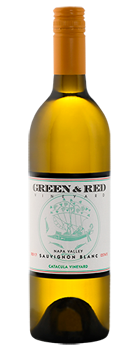
Origin: Napa Valley, California
Varietal: 100% Sauvignon Blanc Musqué
Price: $25.00
ABV: 14.2%
Green & Red Vineyards, named for its red iron soils veined with green serpentine, is located in the steep hills on the east side of Napa Valley. The planting was started in 1972 on ground originally in vineyards in the 1890s. The vineyards are a small percentage of the 200-acre property, which ranges in elevation from 900 to 2,000 feet.
Named for the historic Rancho Catacula, which started in the late 1800s, this vineyard is northeast facing at 1,200-1,400 feet in elevation. With rich sobrante gravel loam soils, surrounded by Madrone groves and blanketed by morning fog, the Catacula vineyard is a perfect site for Sauvignon Blanc Musqué.
The wine shows a pale yellow straw color. The bouquet unfolds lemon zest, grapefruit, jasmine and mango. Juicy, vibrant acidity and honeysuckle emerge on the palate delivering a rich, well-balanced finish.
> For more information, visit Green & Red official website.
9. Klein Constantia, 2020 Sauvignon Blanc | Constantia Valley, South Africa

Origin: Constantia Valley, South Africa
Varietal: 100% Sauvignon Blanc
Price: $22.00
ABV: 13.5%
Described as one of the world’s most beautiful vineyards, Klein Constantia is set amidst ancient trees and lush greenery on the upper foothills of the Constantiaberg, with superb views across the Constantia Valley and False Bay near Capetown in South Africa.
Its history dates back to 1685, when an enormous tract of land was granted to the Dutch East India Company’s tenth commander at the Cape, Simon van der Stel. He had specifically requested this property on the undulating foothills of Table Mountain’s backbone not only for its beauty, but also for its decomposed granite soils on slopes gently cooled by ocean breezes—the perfect conditions for quality winegrowing. It was about 15 times the size of a normal land grant and he named it Constantia, perhaps signifying his intention to make the Cape his constant or permanent home.
By the time of his promotion as governor in 1691, Van der Stel had 10,000 vines planted at Constantia, and when the first small cask of his wine was shipped to Dutch East India Company headquarters in Batavia in 1692, the feedback was good: “The wine from Constantia is of a much higher quality than any sent out so far, but obviously only obtainable in small quantities.”
The wine is light yellow in appearance with a fragrant nose revealing lemon zest, stone fruit, grapefruit and melon. The full-bodied palate offers the same fruit flavors in addition to a lively acidity and salinity, all concluding in a lingering finish.
> For more information, visit Klein Constantia official website.
10. The Paring, 2019 Sauvignon Blanc | Santa Barbara County, California, USA

Origin: Santa Barbara County, California
Varietal: 100% Sauvignon Blanc
Price: $23.00
ABV: 13.5%
Named after the paring knife, favored by chefs in kitchens around the world for its versatility, The Paring wines were created by winemaker Matt Dees to be the perfect complement to almost any food dish. The Paring wines capture the exciting coastal vineyards of Santa Barbara County. Fruit for the wines is sourced primarily from the Ballard Canyon, Sta. Rita Hills and Santa Maria Valley AVAs from vineyard blocks that are either too young or don’t fit into the vintage style of the highly acclaimed Jonata and The Hilt wines.
This Sauvignon Blanc shows a light straw color. The nose reveals grapefruit, lemon zest, melon and white stone fruit. The wine is medium-bodied with vibrant, juicy acidity and a touch of minerality.
> For more information, visit The Paring official website.
Watch our exclusive video interview of Alison Laslett, CEO of Santa Barbara Vintners Association
11. Pascal Jolivet, Blanc-Fumé, 2020 Pouilly-Fumé | Loire Valley, France

Origin: Loire Valley, France
Varietal: 100% Sauvignon Blanc
Price: $35.00
ABV: 12.5%
The house of Pascal Jolivet was founded in 1987 and is one of the most dynamic domaines in France’s Loire Valley. Based in Sancerre, the domaine now owns over 120 acres of prime vineyards spread across the appellations of Sancerre and Pouilly-Fumé.
Sancerre wines originate from three soil types: clay, limestone and flint. Sancerre wines are more floral and elegant than wines of the same varietal type in other regions. Pouilly-Fumé wines come from an area located on the right (north) bank of the Loire, which offers a large diversity of subsoils from the Ice Age. Pouilly-Fumé wines possess characteristic flinty aromas (pierre à fusil), and are slightly rounder and creamier than Sancerre wines. The latter, grown on the left (south) bank of the Loire, exhibit more floral aromas and are bone dry.
Pascal Jolivet is a firm believer in natural winemaking and practices environmentally friendly techniques in both the vineyard and the cellar. The philosophy of the estate is to let nature take its course as much as possible. The juices are fermented with wild yeasts in stainless steel tanks with thermoregulation.
The wine has a vibrant yellow color with a nose of lemon zest, melon, white flowers and a touch of mineral. On the palate, vibrant acidity carries the lychee and mango flavors into a lengthy finish.
> For more information, visit Pascal Jolivet official website.
12. Pech Merle, Russian River Valley 2021 | Sonoma, California, USA

Origin: Sonoma, California
Varietal: 100% Sauvignon Blanc
Price: $25.00
ABV: 14.1%
Pech Merle (pesh-mael) n.:
– 1. Translating to ‘cave under the hill’ in the Occitan language and referring to caves in the Lot River Valley in France,
– 2. A boutique family-run winery dedicated to cultivating and thoughtfully crafting the very best of Sonoma County.
1988: Farm boy from Ohio meets California girl. The California “foodie” is intrigued by this daredevil “Wheelie Champion” who made his first barrel of wine at Ohio State way back when. Fast forward to 2007 when a trip to the prehistoric caves of Pech Merle in the Lot River Valley of France inspired a brand that would be cool, unique, and emotional — just like their visit to the caves. At Pech Merle they are devoted to producing limited production, artisanal, single vineyard wines, celebrating the passion from the vine to the emotion in the bottle.
This Sauvignon Blanc has a pale lemon color. The complex nose unfolds aromas of tangerine, tropical fruit, lime zest, blossom and stone fruit. Juicy flavors of melon, tropical fruit and a touch of mineral flow into a refreshing finish with fresh acidity.
> For more information, visit Pech Merle Winery official website.
13. Quivira, Fig Tree Vineyard, Dry Creek Valley 2020 | Sonoma, California, USA
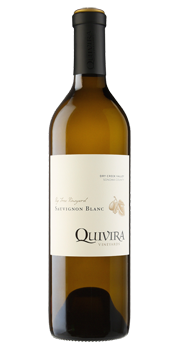
Origin: Sonoma, California
Varietal: 100% Sauvignon Blanc
Price: $25.00
ABV: 13.5%
Quivira Vineyards is a leading producer of Zinfandel, Sauvignon Blanc and Rhône varietals, built upon intentional winegrowing and a thoughtful commitment to biodynamic standards and organic farming. Quivira was founded in 1981 by Holly and Henry Wendt, who were drawn to Dry Creek Valley’s unspoiled rural character and rich history of wine grape growing that is among the longest in California.
From the very beginning, Quivira has been committed to maintaining the integrity of the estate to make farming a long-term proposition. Quivira was among the first vineyards to become certified biodynamic in the United States, earning the certification in 2005. Since 1998, Quivira has been actively engaged in restoring Wine Creek, the Coho salmon and Steelhead trout spawning stream that winds through the center of the estate. The iconic 140-year-old fig tree, has been preserved as a landmark.
The wine has a pale straw color with some green hues. Aromas of grapefruit, verbena, lemon curd, apple and mineral unfold in the nose. The palate reflects the nose and the juicy acidity completes the long and layered finish.
> For more information, visit Quivira Vineyards official website.

